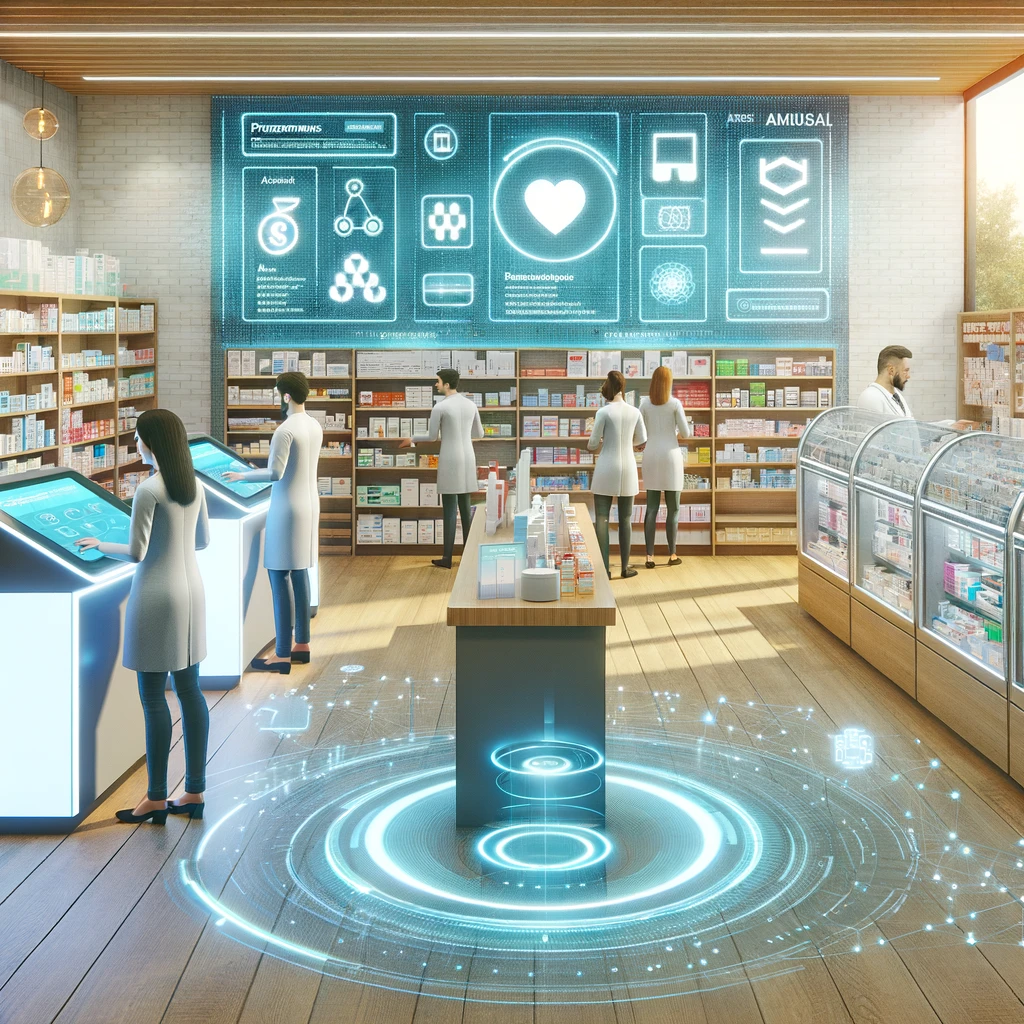In the fast-evolving world of healthcare, pharmacies are increasingly turning to Robotic Process Automation (RPA) to stay ahead. This innovative technology is not just about keeping up with the times; it’s about setting a new standard for efficiency, accuracy, and customer satisfaction. By automating mundane and repetitive tasks, pharmacies are witnessing a transformative shift in their operations, leading to significant cost savings and enhanced service quality.
Revolutionizing Pharmacy with RPA: Streamlining Healthcare, Enhancing Patient Care
1. Automated Prescription Filling: The Efficiency Booster
Use Case: A leading pharmacy chain implemented RPA for prescription filling and witnessed a dramatic increase in productivity. The automation software was programmed to sort, label, and dispense medications with precision.
Benefits: The accuracy rate shot up to an impressive 99.9%, reducing prescription errors significantly. Moreover, the process became 50% faster, cutting the average wait time from 20 minutes to 10 minutes. This led to an estimated cost saving of $200,000 annually in reduced error rectification and labor costs. 2. Inventory Management: The Cost Saver
2. Inventory Management: The Cost Saver
Use Case: Another pharmacy utilized RPA for real-time inventory tracking. The system automatically updated stock levels, alerted the pharmacy about low stocks, and even initiated reorder requests for depleted items.
Benefits: This use case resulted in a 20% reduction in inventory holding costs due to more accurate stock levels and reduced incidences of overstocking or stockouts. The pharmacy saved approximately $120,000 per year by minimizing lost sales and reducing surplus inventory disposal costs.

3. Appointment Scheduling and Customer Service: The Customer Delight
Use Case: A small community pharmacy adopted RPA for managing appointment scheduling and providing 24/7 customer service through chatbots.
Benefits: The automation led to an 80% decrease in customer wait time for scheduling appointments. The chatbot handled over 1,000 customer inquiries a month, saving the pharmacy about $50,000 annually by reducing the need for additional customer service staff.

4. Regulatory Compliance and Reporting: The Risk Mitigator
Use Case: Pharmacies face stringent regulatory requirements, necessitating accurate and timely reporting. RPA was used to automate the compilation and submission of regulatory reports.
Benefits: This resulted in a 70% reduction in the time required to prepare and submit reports, translating into a risk reduction worth over $100,000 in potential fines and penalties. Additionally, the automation ensured 100% compliance with regulatory standards, protecting the pharmacy from legal issues.
The Flip Side: Navigating the Risks of Ignoring RPA
In contrast, pharmacies that lag in adopting RPA face not just the risk of falling behind in efficiency but also incurring higher operational costs and lower customer satisfaction. For instance, manual processes prone to errors can lead to a 20% increase in operational expenses due to wasted time and resources in correcting mistakes. Furthermore, customer dissatisfaction from long wait times and errors can result in a loss of up to 30% in potential revenue from repeat business.
“RPA in pharmacy operations marks a significant leap forward, slashing prescription errors by up to 80% and boosting efficiency by 50-70%. It’s not just an upgrade; it’s a revolution in patient care and operational excellence.”
Conclusion: Embracing the Future with Open Arms

The adoption of RPA in pharmacies isn’t just a step towards modernization; it’s a leap into a future where efficiency, accuracy, and customer satisfaction are the norms. With real-life use cases showing significant benefits in cost savings, productivity, and risk mitigation, the message is clear: the time to embrace RPA is now. By integrating robotic process automation into their operations, pharmacies can not only meet the demands of today but also anticipate the challenges of tomorrow, ensuring a healthier, more prosperous future for all.





Recent Comments